The Magical Rainforest Wonder
The Tongbiguan Provincial Nature Reserve in Yunnan Province, where the Moli Tropical Rainforest Scenic Area is located, lies in the western part of China's tropical region. It is an area with the tropical biogeographical fauna of the Irrawaddy River system in China. Historically, this region was not affected by the Quaternary glaciation period, preserving many ancient and primitive species of flora and fauna. It is a concentrated and typical area of the China-India-Myanmar tropical biogeographical zone.
Entering the Moli Tropical Rainforest, you can not only see a vertical landscape of tropical rainforest with multiple tree species, multiple layers, and rich diversity, but also witness magical rainforest phenomena such as "Sky Gardens," "Trees Embracing Stones," and "Old Stems Flowering."
[Sky Garden]
Sky Garden refers to the epiphytic phenomenon of ferns and orchids. Ferns and orchids in the rainforest often attach themselves to the branches and twigs of tall trees, living off dew, moisture in the air, and limited humus (decayed dead branches, leaves, or animal excrement). Various leaf shapes and flowers cluster around the big trees, hanging in the air like a "sky garden."
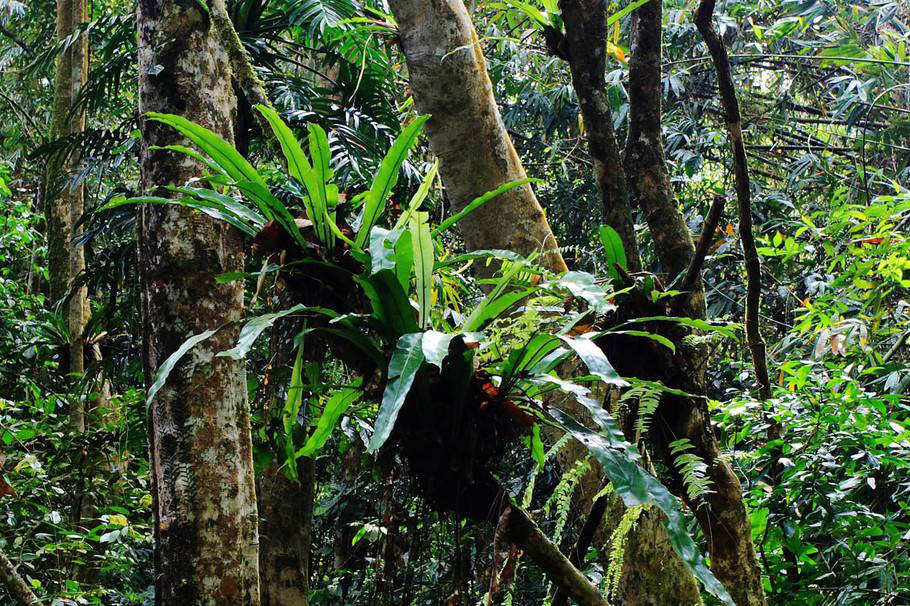
[Old Stems Flowering and Fruiting]
Old stems flowering and fruiting refers to the phenomenon where flowers and fruits bloom directly on the trunks of trees. This is a natural adaptation of rainforest plants to insect pollination activities. In tropical rainforests, insects have limited activity range in the canopy, and the branches and leaves of mature trees are often very high. To make it easier for insects and other animal pollinators to reach, clever trees bloom flowers on the lower parts of the trunk. The "bian dan" vine, one of the few lianas in tropical rainforests exhibiting old stem flowering and fruiting, produces flowers and fruits only at the base of its thicker stems, sometimes even growing close to the ground. This natural arrangement not only facilitates various insects to pollinate it, helping it reproduce more offspring, but also benefits humans, birds, and rodents that feed on its fruits, aiding in seed dispersal. When immature, the fruits on old stems are green and sour; when ripe, they turn reddish-brown, soften, are juicy, slightly sweet, edible, and can be used to make wine like grapes.
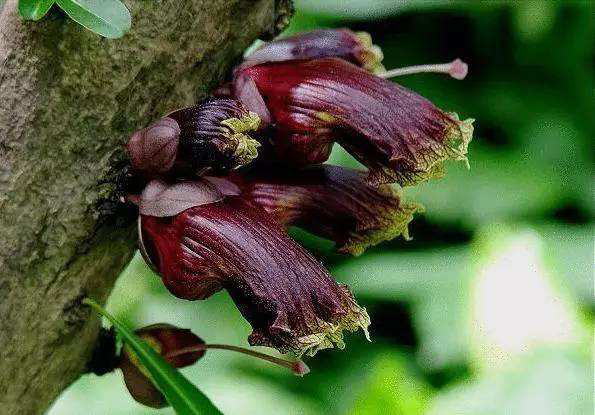
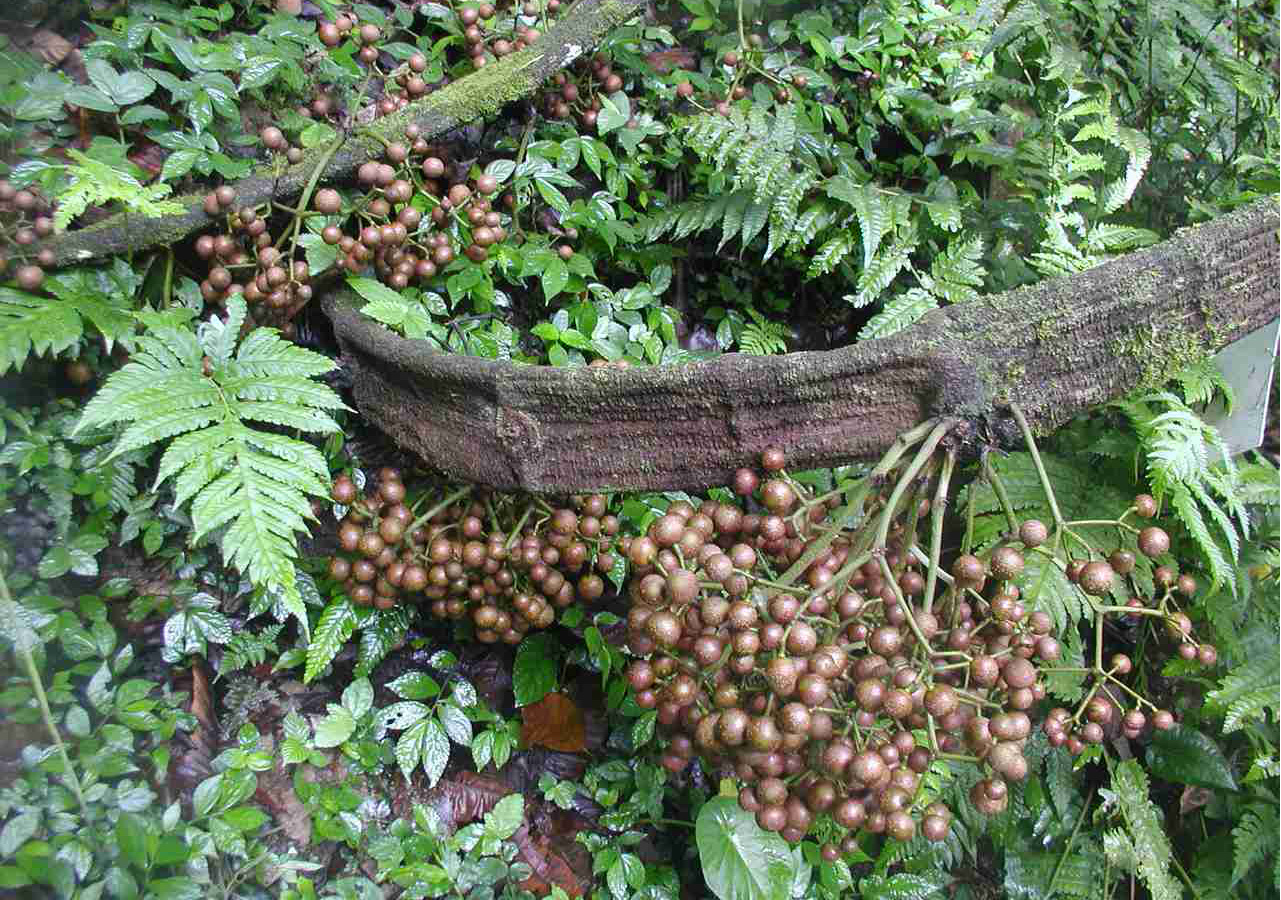
[Thousand Feet Landing]
Thousand Feet Landing refers to the phenomenon in rainforests where trees, while competing upwards for sunlight, also grow many roots downward to absorb water and nutrients, forming thousands of roots reaching the ground. These large hanging roots in the rainforest resemble "strings of a musical instrument" and are locally called "forest magic strings." Over time, these aerial roots grow rapidly and thicken, becoming "buttress roots," eventually forming the phenomenon of a single tree becoming a forest.
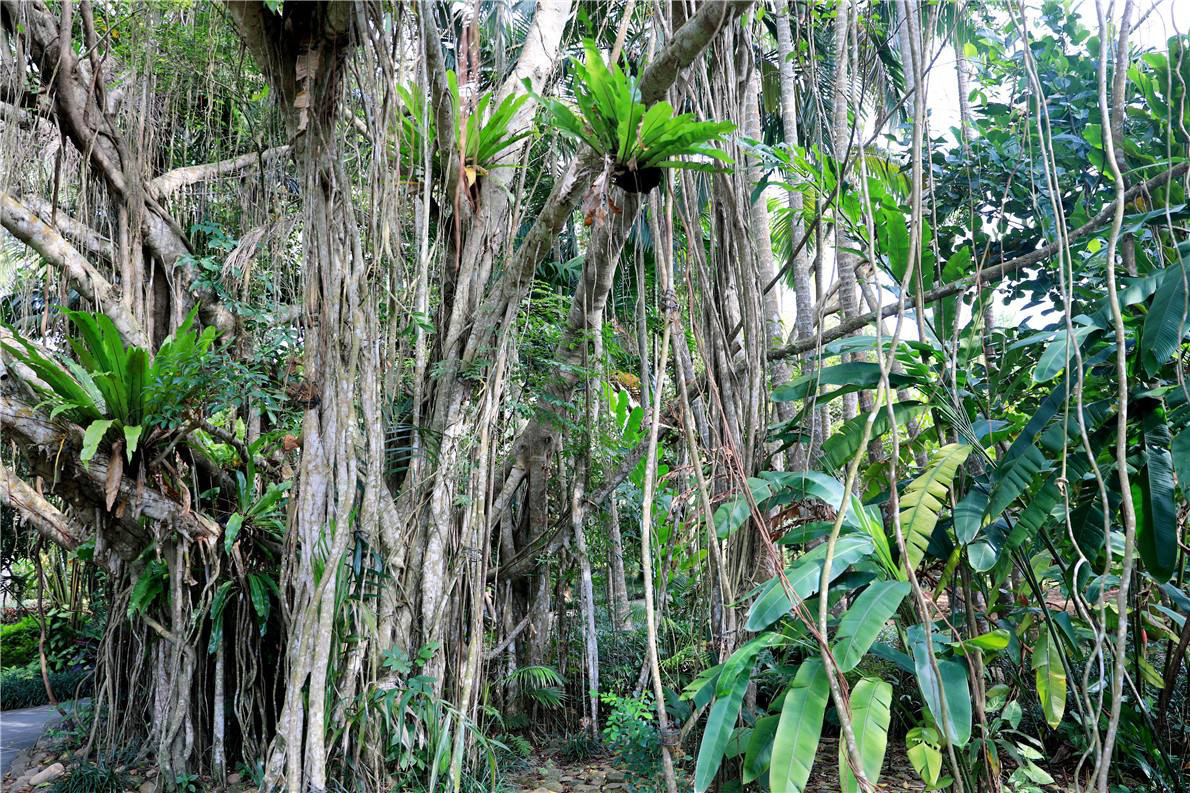
[Buttress Root Phenomenon]
The buttress root phenomenon refers to the formation of large buttress roots by tall trees adapting to the tropical rainforest climate. In tropical rainforests, abundant rainfall causes strong leaching, dissolving and washing away many soluble minerals, leaving only a thin and very poor soil layer. Most tree roots grow on the surface to quickly absorb nutrients from the topsoil. To avoid top-heaviness, "buttress roots" have evolved to resist strong storms and help retain moisture. This solves the dilemma of tree roots in tropical rainforests being unable to penetrate deep soil layers while needing to support the above-ground trunk and branches.
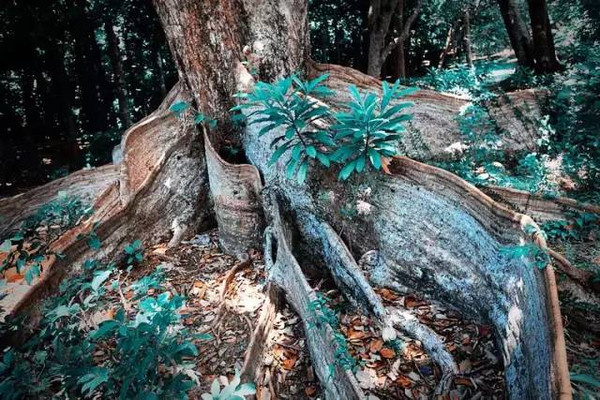
[Plant Strangling]
Plant strangling refers to the phenomenon where the fruits of strangler plants are eaten by birds, and the seeds are excreted onto other trees. Under suitable conditions, these seeds germinate and produce many aerial roots that climb down the host tree trunk to the soil, competing for the host plant's nutrients and water. Eventually, the host plant gradually withers and dies due to external strangling pressure and internal nutrient deficiency. In tropical rainforests, there are twenty to thirty species of strangler figs. They often choose tall and upright hosts to strangle, easily gaining a broader ecological niche. The strangling phenomenon is the result of interactions between plants and is a harsh process akin to the survival of the fittest in the animal kingdom.

[Tree Embracing Stone Phenomenon]
Tree embracing stone refers to the phenomenon where, under suitable temperature and moisture conditions, plant seeds that fall on stones take root and germinate, growing along the stone and eventually tightly wrapping the stone, forming a "tree within stone." Generally, figs easily form the tree embracing stone phenomenon. To seek soil and more nutrients, they attach multiple roots to the stone surface growing downward, eventually enveloping the entire stone. A complete tree embracing stone often takes hundreds of years to form, making it very rare.
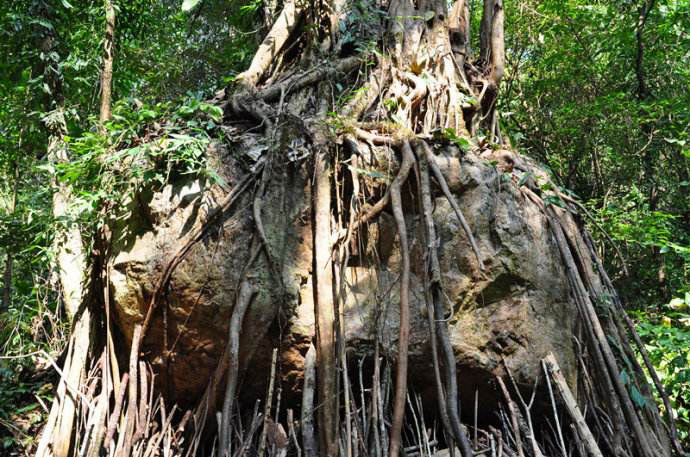
Tips:
The Ruili area has a tropical rainforest climate, so it is suitable for travel all year round.
There is no dedicated tourist line in the scenic area. If you are not joining a tour group, it is recommended to take a bus, charter a car, or drive yourself.
Moli Tropical Rainforest Scenic Area belongs to the Tongbiguan Provincial Nature Reserve. Please strictly follow the relevant regulations when entering the protected area.
The path to Moli Waterfall is slippery, please be careful.





